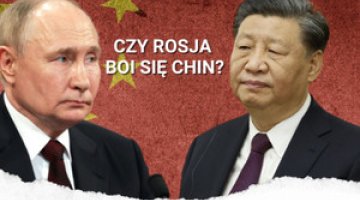Russia’s attack on Ukraine: day 147

Russian troops continue to shell and attempt to take control of the border areas of Chernihiv (Mykolaivka), Sumy (including Esman, Zaruts’ke, Pavlivka, Volfyne, Yastrubyne, Zhuravka) and Kharkiv oblasts (Kharkiv and towns to the north, east and south-east of it). Intense fighting is taking place along the Pytomnyk–Udy line, with the aim of gaining control of the access roads to Kharkiv running north of the city from the territory of the Russian Federation. The invading forces are also pushing west of Izium (clashes in the Husarivka, Dmytrivka and Brazhkivka areas), while the entire Balakliia–Velyka Komyshuvakha area is under constant shelling. The aggressor is also attacking in the direction of Barvinkove and trying to encircle Ukrainian troops defending the approach to Sloviansk from the north-west on the M03 Izium–Sloviansk route.
The Russians have also concentrated their efforts on gaining convenient positions to attack Sloviansk from the east and south-east. The main focus of operations remains the capture of Siversk and Bakhmut. The invading forces are also attempting to attack in the area west of Donetsk: fighting is underway in the Novomykhailivka and Mykilske areas. The entire assault area – from the border of the Luhansk and Donetsk oblasts in the north, along the contact line from Izium, through Sloviansk, Kramatorsk, Bakhmut, Toretsk, Avdiivka, Kurakhove and Vuhledar – is under intense artillery, air and rocket fire. A similar situation prevails in the southern section of the frontline (Kherson, Mykolaiv, Zaporizhzhia and Dnipropetrovsk oblasts), where Ukrainian positions and large urban centres are constantly shelled and the aggressor’s troops are limited to defensive and reconnaissance activities.
The Ukrainian army carried out an artillery shelling of the Antonivka Road Bridge, connecting the village of Oleshky with occupied Kherson. This is a strategically important transport facility allowing Russian forces operating on the southern front, in the Kherson, Mykolaiv and Dnepropetrovsk oblasts, to cross the Dnieper River. Its permanent damage will significantly hamper the logistics of the aggressor’s troops and force them to use the dam at the Nova Kakhovka hydroelectric power station, located more than 60 km away, which has also been shelled by Ukrainian artillery in recent days. In this region, the Ukrainians continue to launch effective rocket attacks on enemy command posts and fuel and ammunition depots.
Commander-in-Chief of the Armed Forces of Ukraine Valeriy Zaluzhny reported during a conversation with US Chief of Staff Mark Milley that the defenders had managed to control the situation on the frontline. In his opinion, Ukraine is in full control of the course of hostilities, which has been made possible by the use of Western military equipment, primarily the HIMARS artillery rocket systems. In turn, Defence Ministry spokesman Oleksandr Motuzianyk announced that the use of these systems provided for destroying more than 30 enemy facilities and logistics centres, significantly reducing their offensive potential.
As a result of the 20 July meeting of the Contact Group of States Supporting Ukraine (the so-called Ramstein Group), its participants agreed on the continuation and expansion of military assistance. This is to include the supply of arms and ammunition, as well as the organisation of military training. According to Defence Minister Oleksiy Reznikov, the supply of Western equipment will consist of weapons used on land, at sea and in the air, but the specific details will be first ‘learnt by enemy soldiers on the battlefield’. For his part, US Secretary of Defence Lloyd Austin stated that Western allies would provide Kyiv with every available military assistance helpful in deterring Russian aggression and deoccupation of Ukrainian territories. In addition, he announced that four more HIMARS systems will be delivered to the country (thus the Ukrainian army will already have sixteen), as well as two NASAMS air defence batteries, as previously announced.
Russian Foreign Minister Sergei Lavrov has warned that Moscow will expand the ‘geographical targets’ of the war in Ukraine if the West does not stop supplying Kyiv with rocket artillery sets, including HIMARS. He pointed out that the Russian plans are not limited to the seizure of Donbas, but also include the annexation of Kherson and Zaporizhzhia oblasts and other territories. Lavrov stated that Russia would not allow ‘weapons threatening it and the ‘independent republics’ to appear in that part of Ukraine that will be controlled by Zelensky or whoever replaces him’. In response, the head of the Ukrainian Foreign Ministry, Dmytro Kuleba, called for tougher sanctions against Russia and an acceleration of arms supplies to Kyiv. Germany’s Foreign Minister Annalena Baerbock regarded Lavrov’s words as propaganda and assured that Germany and the Netherlands would deliver self-propelled Panzerhaubitze 2000 howitzers and missile defence systems to Ukraine by the end of the summer.
The head of the military administration of the Mykolaiv Oblast, Vitaly Kim, announced the closure of Mykolaiv in order to neutralise collaborators who provide the aggressor with the data to correct missile attacks. He notified that the administration has received many reports of saboteurs’ activities and once they are verified and the harvest completed, the town will be closed for the operation (which will be in one to two weeks). Residents will be warned of this so that they can stock up on food and stay in their homes. A reward of $100 is being offered by the regional authorities for information useful in capturing collaborators assisting the enemy in correcting the shelling.
On 19 July, the government in Kyiv asked the owners of Ukraine’s Eurobonds to postpone their repayment (including interest) for two years. However, in doing so, it was indicated that, in the event of a refusal, the state would repay its debt as scheduled. A day later, Germany’s Finance Ministry communicated that Ukraine’s group of lenders, comprising the US, UK, Japan, Germany, France and Canada, had agreed to suspend debt service on the stricken country from 1 August until the end of 2023, with the possibility of an extension for a further 12 months. Ukrainian Eurobonds to the tune of $17bn are currently in circulation, of which Kyiv should repay $3bn within a year and a half.
On 21 July, the National Bank of Ukraine (NBU) increased the official exchange rate of the Ukrainian currency against the dollar by 25%, to 36.6 hryvnia. This is the first increase since the start of the invasion, when the rate was frozen at 29.25 hryvnia per dollar. The bank justified its decision with, among other things, the need to increase the competitiveness of local producers. This means levelling the official rate with the black market rate, which in recent weeks has fluctuated around 37 hryvnias per dollar.
The Ministry of Agriculture forecasts that if the blockade of Ukrainian ports is not lifted, farmers and agribusinesses could sow 30–60% less winter cereals in autumn compared to the previous year. The main reason for this will be the lack of sufficient funds to purchase grain, fuel and fertilisers, caused by the inability to sell this year’s crop. According to the ministry, there is currently no problem with grain storage. In addition, Ukraine is to receive portable storage facilities in the coming weeks to store an additional 10–15 million tonnes of grain for 12–17 months.
Commentary
- The double shelling of the Antonivka Road Bridge in Kherson did not lead to any permanent damage (the structure was temporarily closed to heavy vehicle traffic). The attack was probably a signal to the Russian army that the Ukrainian army’s counter-offensive, which had been announced for several weeks, could be carried out. However, the probability of the implementation of such a counter-offensive should currently be assessed as low. The Ukrainian military is focused on defending positions in the Donetsk Oblast, while a counter-offensive in the south would require preventing the Russians from quickly redeploying units from the Crimean Peninsula and neutralising the threat from their fleet. Reznikov admitted that carrying out an effective counter-offensive would require around 100 HIMARS systems. An intensification of military action could also negatively affect the ongoing negotiations on the unblocking of Ukrainian ports in the Black Sea and would give the Russians a pretext to break off the talks.
- Moscow is reacting harshly to Western military aid being delivered to Kyiv, particularly rocket artillery systems. Nervousness is aroused both by rocket attacks slowing down the progress of the aggressor’s forces in the Donbas and by repeated acts of sabotage in Russian cities close to the border (including Belgorod and Kursk), carried out by Ukrainian sabotage groups. The Kremlin’s irritation is also caused by the very fact that the Ukrainian army is being equipped with Western weapons and its military is being trained in the West according to NATO standards. In doing so, the Kremlin resorts to threats designed to create the impression that it makes its plans for Ukraine dependent on the behaviour of Kyiv and the West. In fact, the invariable strategic goal of Russian forces remains to break through enemy resistance and expand beyond the currently occupied territories.
- The announcement of Mykolaiv’s closure to raid saboteurs working for the aggressor proves that there is a real problem with collaborators providing strategic information to the enemy and helping to correct missile attacks. The moves by the head of the Mykolaiv administration may also be a reaction to the recent dismissal of the heads of the Security Service of Ukraine and the Prosecutor General’s Office, who were accused of not doing enough to purge their regional structures of Russian collaborators. In this context, Kim is seeking to prove the effectiveness of the local administration by demonstrating an intensified fight against saboteurs and saboteurs.
- The repayment and servicing of the debt is the third largest item (after spending on the armed forces and pensions) in Ukraine’s budget, and some $2 billion has been allocated for this purpose since the beginning of the year. Speculation about the possibility of discontinuing debt servicing has been going on for at least a few weeks, but has so far been opposed by the Ministry of Finance, which feared a negative reaction from financial markets. The swift response from the main lenders indicates that the government’s request to suspend repayment was consulted with them in advance. Ukraine had until the end of 2023 to repay $6.6 billion (when converted according to the new NBU exchange rate). Postponing the repayment of the bonds and the interest on them will save Kyiv nearly $5 billion.




